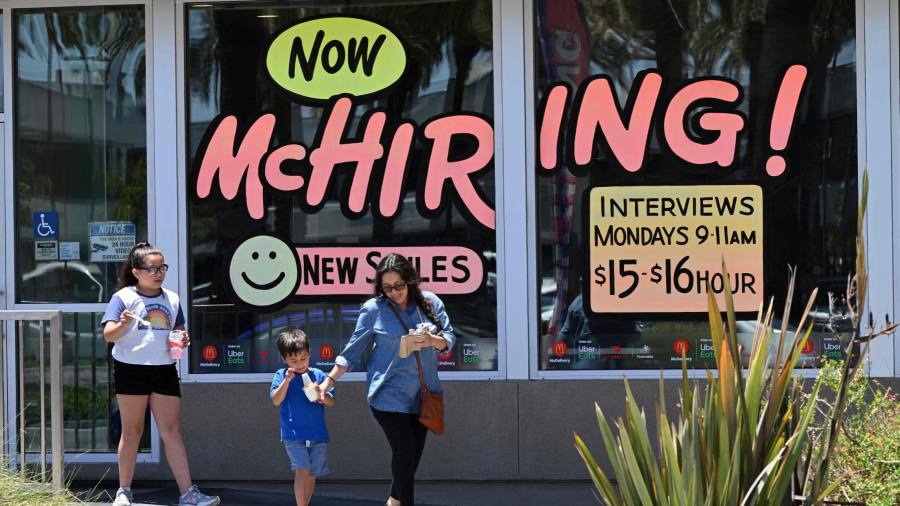[ad_1]
The pace of US jobs growth is expected to have slowed again in November in a further sign that demand for new workers is easing amid the Federal Reserve’s historic efforts to cool the economy.
Non-farm payrolls are set to have increased by 200,000 last month, according a consensus forecast compiled by Bloomberg, a step down from the 261,000 jump recorded in October and the 315,000 rise in September. Before the November release, the US economy had added 407,000 jobs each month on average this year, compared to 562,000 monthly in 2021.
The unemployment rate is set to remain steady at 3.7 per cent.
The new data, to be released by the Bureau of Labor Statistics at 8:30am ET on Friday, comes as the US central bank is trying to damp economic activity by rapidly raising borrowing costs in an attempt to tame inflation that is still running near multi-decade highs.
Consumer demand has started to ease, the housing sector has weakened and the technology sector has suffered a wave of job cuts. However, the economy more broadly has showed surprising resilience, despite the Fed’s benchmark policy rate now closing in on 4 per cent.
In December, the central bank is set to end its string of 0.75 percentage point rate increases and move to a half-point rise even as it ultimately targets a higher level of interest rates next year than expected. Many officials have signalled the benchmark policy rate could eventually reach 5 per cent.
In remarks delivered this week, chair Jay Powell said the need for higher rates stems from the fact that the Fed has seen “only tentative signs of moderation of labour demand”. While the number of job vacancies has fallen from its peak, it still remains historically elevated.
Powell added that monthly jobs growth also remains far too high, citing estimates suggesting the pace needs to be 100,000 a month just to keep up with population growth.
Fed officials are chiefly concerned about wage growth and the effect it is having on price pressures, given it is running far in excess of what is needed for inflation to fall back to the Fed’s 2 per cent target.
Average hourly earnings in November are expected to have increased another 0.3 per cent, a slightly lower monthly pace than the previous period but amounting to a 4.6 per cent annual jump.
Many sectors remain hobbled by worker shortages, pushing up wages as companies try to attract new hires. In November, the so-called labour force participation rate, which tracks the share of workers either employed or looking for a job, is expected to remain stuck below pre-pandemic levels at 62.3 per cent. Holding back labour supply is a flood of early retirements and a slowdown in immigration.
Loretta Mester, president of the Cleveland Fed, recently told the Financial Times that a reduced supply of workers will probably mean the central bank will have to do more to bring down demand for new hires, suggesting job losses on the horizon.
Economists expect the unemployment rate to surpass 5 per cent next year, as the Fed keeps rates at a level that will curb growth.
[ad_2]
Image and article originally from www.ft.com. Read the original article here.

